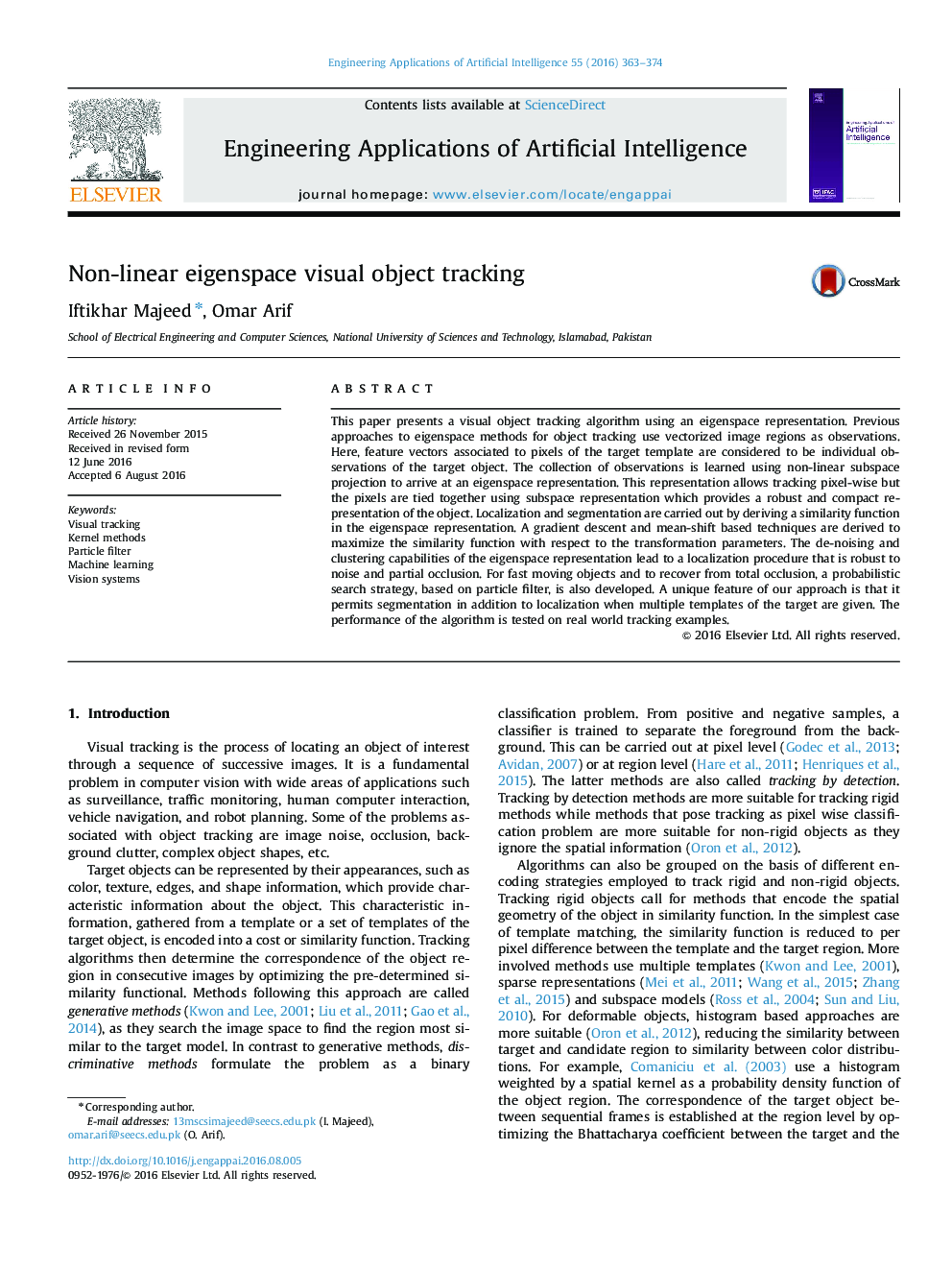| Article ID | Journal | Published Year | Pages | File Type |
|---|---|---|---|---|
| 6854334 | Engineering Applications of Artificial Intelligence | 2016 | 12 Pages |
Abstract
This paper presents a visual object tracking algorithm using an eigenspace representation. Previous approaches to eigenspace methods for object tracking use vectorized image regions as observations. Here, feature vectors associated to pixels of the target template are considered to be individual observations of the target object. The collection of observations is learned using non-linear subspace projection to arrive at an eigenspace representation. This representation allows tracking pixel-wise but the pixels are tied together using subspace representation which provides a robust and compact representation of the object. Localization and segmentation are carried out by deriving a similarity function in the eigenspace representation. A gradient descent and mean-shift based techniques are derived to maximize the similarity function with respect to the transformation parameters. The de-noising and clustering capabilities of the eigenspace representation lead to a localization procedure that is robust to noise and partial occlusion. For fast moving objects and to recover from total occlusion, a probabilistic search strategy, based on particle filter, is also developed. A unique feature of our approach is that it permits segmentation in addition to localization when multiple templates of the target are given. The performance of the algorithm is tested on real world tracking examples.
Related Topics
Physical Sciences and Engineering
Computer Science
Artificial Intelligence
Authors
Iftikhar Majeed, Omar Arif,
